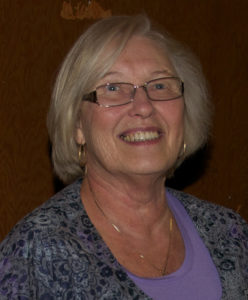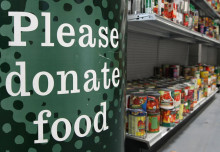I am Still Here: Loneliness and Social Isolation
Written by Rita Roling
“Age is not how old you are but how you feel.”
~(Gabriel Garcia Marquez)
The difference between loneliness and social isolation
Social psychologist-researchers J. Holt-Lunstand and T.B. Smith of Brigham Young University state that “Social isolation denotes few social connections or interactions, whereas loneliness involves the subjective perception of isolation – the discrepancy between one’s desire and actual level of social connection.” Thus loneliness should not be equated with being alone as people who do not live by themselves can still feel extreme loneliness. Although there is a correlation between loneliness and social isolation it is important to differentiate between the two.
At one point in their lives most people have likely had bouts of feeling alone but these feelings rarely linger. Loneliness however remains. For some, solitude is a conscious withdrawal; it is a time to reflect, study and maybe write. For others it is not voluntary but a condition from which there seems to be no escape. In his December 22nd 2017 New York Times article, Dr. Dhruv Khullar writes: “Loneliness is a specially tricky problem because accepting and declaring our loneliness carries a profound stigma. Admitting that we are lonely can feel as we have failed in life’s most fundamental domains; belonging, love, attachment. It attacks our basic instincts to save face, and makes it hard to ask for help.”
Risk factors of social isolation
A key component in the NSC report is to identify risk factors that are prevalent in most cases of people who are socially isolated. Rarely does one reach that state because of one incident or condition as this is generally due to several interactive factors. Some of the most prevalent ones are:
a. Being age 80 or older,
b. Having compromised health issues,
c. Weak, unsatisfactory or non-existent familial relationships,
d. Poor or non-existent access to transportation,
e. Poverty and food scarcity,
f. Changing family structures and change of location of residence.
“It is terrible to be alone and frightened at any age, but I think it is worse when you’re old.”
~(Stephen King)
Consequences of loneliness and isolation
Research shows that loneliness and social isolation directly affect an individual’s physical and mental health, mortality, dementia, depression, and hypertension. Other findings point to an increase in a sedentary lifestyle, substance abuse, chronic depression and a higher suicide risk. The 2016 Halton study states that “lonely older adults are three times more likely to consult with health professionals and they have a thirty percent higher hospital admission rate than their non-lonely counterparts.” It further says that “seniors are more likely to wait until they are older and in much poorer health to seek medical attention.” It is evident that unless effective preventative measures are put into place not only will loneliness and marginalization have devastating human effects but will take a toll on Canada’s health care system’s economic resources.
Effective preventative measures to reduce and eliminate loneliness and marginalization
“Treatment without prevention is simply unsustainable.”
~(Bill Gates)
 According to 2016 demographics, Canada’s population is close to thirty-six million. Circa fourteen percent are adults over the age of sixty-five. It is estimated that ten percent or close to half a million of older adults feel lonely and marginalized. Only a few decades ago, discourse started to examine how older individuals cope with the aging process. The majority of studies focused on social isolation and touched only minimally on how loneliness may be the main precursor. The NSC report finds that programs and services based on available data have generally been ineffective and failed to involve older adults in program development. The report recommends to: “raise public awareness of seniors’ social isolation; promote improved access to information and services, build the capacity of organizations to address isolation of seniors through social innovation and to support research to better understand the issue of social isolation.” The organization further states that “the problem with current interventions is that they are only beneficial if an older person who is isolated and/or lonely chooses it, and if the intervention is well-suited to the individual’s needs.” In other words, programs cannot be of the cookie-cutter type, stereotypical, lacking individuality; they must be diverse and appropriate to the specific population at risk.
According to 2016 demographics, Canada’s population is close to thirty-six million. Circa fourteen percent are adults over the age of sixty-five. It is estimated that ten percent or close to half a million of older adults feel lonely and marginalized. Only a few decades ago, discourse started to examine how older individuals cope with the aging process. The majority of studies focused on social isolation and touched only minimally on how loneliness may be the main precursor. The NSC report finds that programs and services based on available data have generally been ineffective and failed to involve older adults in program development. The report recommends to: “raise public awareness of seniors’ social isolation; promote improved access to information and services, build the capacity of organizations to address isolation of seniors through social innovation and to support research to better understand the issue of social isolation.” The organization further states that “the problem with current interventions is that they are only beneficial if an older person who is isolated and/or lonely chooses it, and if the intervention is well-suited to the individual’s needs.” In other words, programs cannot be of the cookie-cutter type, stereotypical, lacking individuality; they must be diverse and appropriate to the specific population at risk.
Research shows that peer services have proven to be quite effective. The Jewish Seniors Alliance of Greater Vancouver is a firm believer in “Seniors stronger together”. This non-profit organization in conjunction with older adults has developed and implemented many supportive programs such as; peer counseling, friendly visitor/mentorship services, supportive telephone calls, grief counseling and information referral. We encourage participation in all our social events. All programs aim to support and empower seniors and to diminish feelings of loneliness and isolation.
Research shows that loneliness and social isolation directly affect an individual’s physical and mental health, mortality, dementia, depression, and hypertension. Other findings point to an increase in a sedentary lifestyle, substance abuse, chronic depression and a higher suicide risk. The 2016 Halton study states that “lonely older adults are three times more likely to consult with health professionals and they have a thirty percent higher hospital admission rate than their non-lonely counterparts.” It further says that “seniors are more likely to wait until they are older and in much poorer health to seek medical attention.” It is evident that unless effective preventative measures are put into place not only will loneliness and marginalization have devastating human effects but will take a toll on Canada’s health care system’s economic resources.
Effective preventative measures to reduce and eliminate loneliness and marginalization
“Treatment without prevention is simply unsustainable.”
~(Bill Gates)
 According to 2016 demographics, Canada’s population is close to thirty-six million. Circa fourteen percent are adults over the age of sixty-five. It is estimated that ten percent or close to half a million of older adults feel lonely and marginalized. Only a few decades ago, discourse started to examine how older individuals cope with the aging process. The majority of studies focused on social isolation and touched only minimally on how loneliness may be the main precursor. The NSC report finds that programs and services based on available data have generally been ineffective and failed to involve older adults in program development. The report recommends to: “raise public awareness of seniors’ social isolation; promote improved access to information and services, build the capacity of organizations to address isolation of seniors through social innovation and to support research to better understand the issue of social isolation.” The organization further states that “the problem with current interventions is that they are only beneficial if an older person who is isolated and/or lonely chooses it, and if the intervention is well-suited to the individual’s needs.” In other words, programs cannot be of the cookie-cutter type, stereotypical, lacking individuality; they must be diverse and appropriate to the specific population at risk.
According to 2016 demographics, Canada’s population is close to thirty-six million. Circa fourteen percent are adults over the age of sixty-five. It is estimated that ten percent or close to half a million of older adults feel lonely and marginalized. Only a few decades ago, discourse started to examine how older individuals cope with the aging process. The majority of studies focused on social isolation and touched only minimally on how loneliness may be the main precursor. The NSC report finds that programs and services based on available data have generally been ineffective and failed to involve older adults in program development. The report recommends to: “raise public awareness of seniors’ social isolation; promote improved access to information and services, build the capacity of organizations to address isolation of seniors through social innovation and to support research to better understand the issue of social isolation.” The organization further states that “the problem with current interventions is that they are only beneficial if an older person who is isolated and/or lonely chooses it, and if the intervention is well-suited to the individual’s needs.” In other words, programs cannot be of the cookie-cutter type, stereotypical, lacking individuality; they must be diverse and appropriate to the specific population at risk.
Research shows that peer services have proven to be quite effective. The Jewish Seniors Alliance of Greater Vancouver is a firm believer in “Seniors stronger together”. This non-profit organization in conjunction with older adults has developed and implemented many supportive programs such as; peer counseling, friendly visitor/mentorship services, supportive telephone calls, grief counseling and information referral. We encourage participation in all our social events. All programs aim to support and empower seniors and to diminish feelings of loneliness and isolation.
 Rita Roling worked in the social service field for over three decades. She is a firm believer in volunteerism and has for many years been actively involved with the Jewish Seniors Alliance. She is an executive of JSA and a member of the editorial committee.
Rita Roling worked in the social service field for over three decades. She is a firm believer in volunteerism and has for many years been actively involved with the Jewish Seniors Alliance. She is an executive of JSA and a member of the editorial committee.





